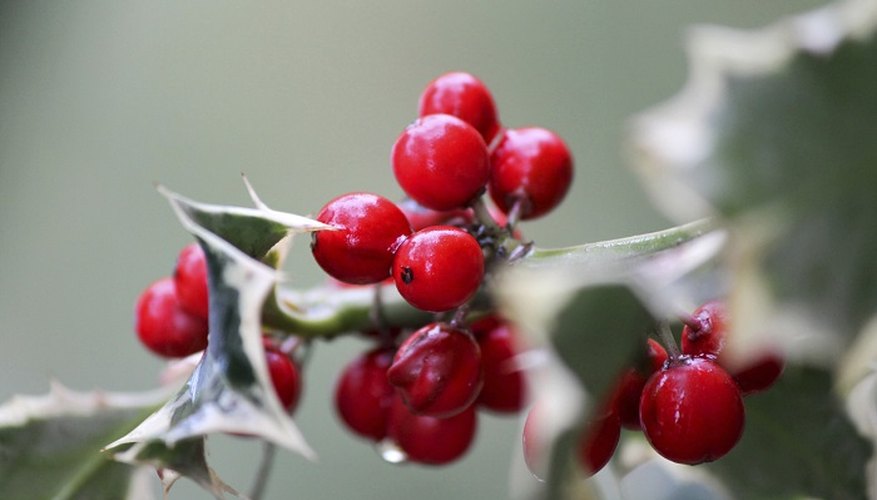Holly is not only a beautiful addition to your garden but also a useful one for attracting and feeding wildlife. It was an important plant in history, and is still vitally important today. This evergreen tree grows to 15 metres (50 feet) and is often used as a hedge or privacy screen. Holly is best known for its flush of red berries produced in winter, when the plant becomes a host for all sorts of birds and wildlife looking for food and shelter from the harsh weather.
Holly history
Holly trees have a strong connection with Christmas -- and some of the first Christmas wreaths were fashioned from the branches of this evergreen. While the tree isn't as significant to people today, it is vital to the survival of birds and other wildlife throughout the winter. The berries are eaten after they freeze and soften. Birds also take refuge from harsh winter storms and predators in the holly tree's spiny, evergreen leaves. Holly trees are long lasting. Nearly a dozen holly trees planted and cared for by George Washington still grow today at Mount Vernon in the United States.
- Holly trees have a strong connection with Christmas -- and some of the first Christmas wreaths were fashioned from the branches of this evergreen.
Holly care
Holly trees need little in the way of care. Provide supplementary water to your holly to help it get established after planting. Once established, holly trees only need watering during times of drought. Holly trees prefer acidic soil and will get a major boost if you mulch around the base of the trunk with a 2.5 cm (1 inch) deep layer of coffee grounds, once or twice a year. Otherwise, holly does not like to be over-fertilised.
- Holly trees need little in the way of care.
- Provide supplementary water to your holly to help it get established after planting.
Pruning holly
While holly trees can be pruned at almost anytime of the year, the days around Christmas are coincidentally the best time to prune. December marks the month that holly trees enter dormancy and aren't actively growing. Trimming holly later in the spring or summer after flowering will reduce the amount of berries produced in the winter, not only impacting its bright display but also leaving your local wildlife with less to eat. Holly trees grow in a tight pyramidal form in their younger years and can be pruned heavily to maintain this shape. As the tree ages, the shape of holly can become irregular and the branch structure will open up more. Holly can be severely cut back, but avoid cutting the plant all the way back to the ground.
- While holly trees can be pruned at almost anytime of the year, the days around Christmas are coincidentally the best time to prune.
- Holly trees grow in a tight pyramidal form in their younger years and can be pruned heavily to maintain this shape.
Preserving trimmings
Since December marks the best month to prune holly, you will find yourself with plenty of evergreen boughs and red berries to decorate your house. Keep the cut ends of holly branches in water to prolong their life. Change water every couple of days, and add 5 ml (1 tsp) of sugar to keep the holly cuttings looking great for even longer.
